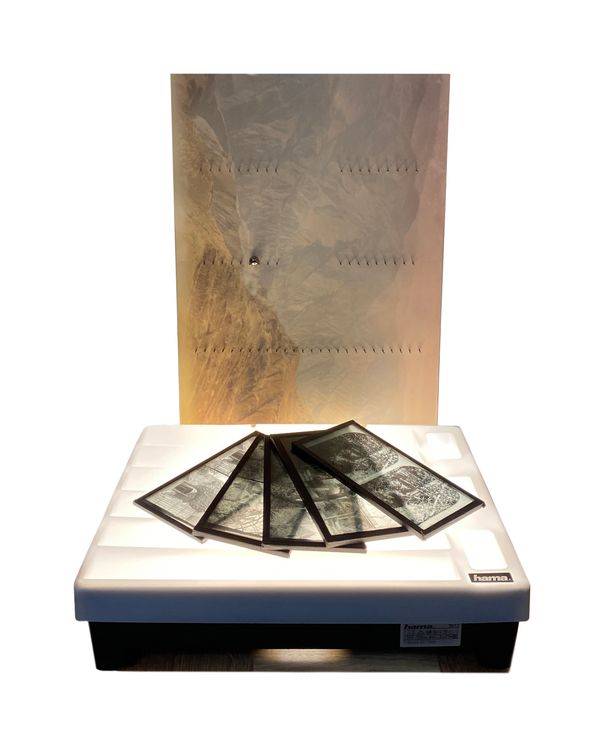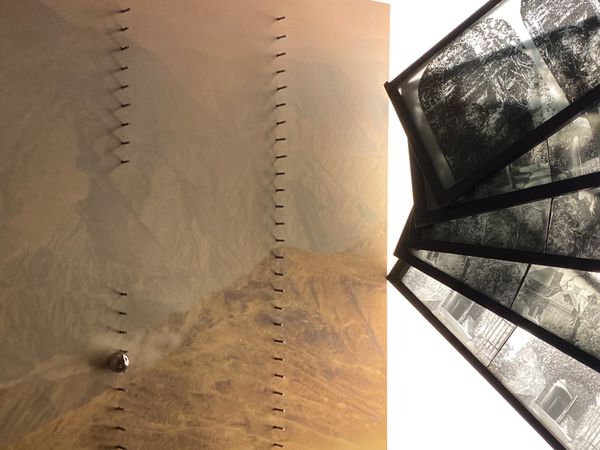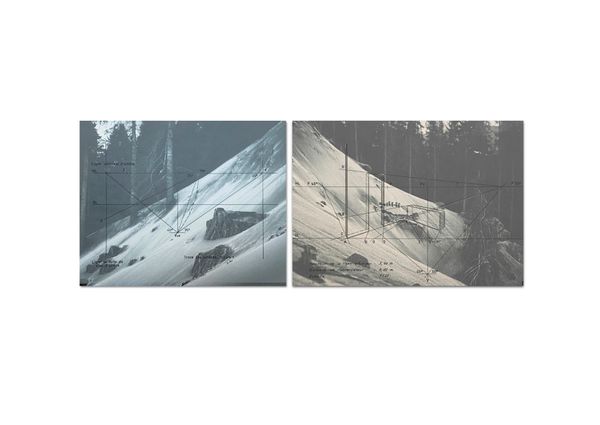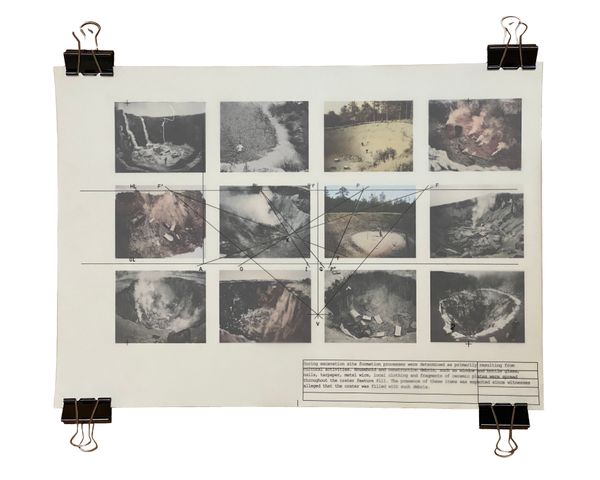Point De Fuite (Vanishing Point)
-
Dates2024 - Ongoing
-
Author
- Topics Landscape, War & Conflicts
- Locations Switzerland, Cyprus
The work explores disappearance, memory, and truth through a fictionalized landscape shaped by political violence and erasure. Blurring fact and absence, it questions how truth is assembled from fragments, challenging what we accept as evidence.
Point De Fuite
The project explores disappearance, ambiguity, absence and the construction of truth—both in its subject matter and its medium. It does so through the creation of a fictionalised representation of land, shaped by political violence and erasure. Blurring the boundaries between presence and absence, life and death, it questions how truth is assembled from fragments and challenges what we accept as evidence.
It engages with forensic science, contested narratives, and the fabrication of truth, reflecting on the uncertainty surrounding missing persons, the unknown, and the role of probability in forensic investigations. These themes resonate deeply within the project’s technical approach, where layers of evidence and erasure mirror the fragility of truth itself. At the same time, the work examines the shifting role of photography, in a time when the medium rapidly loses its sensorial monopoly on representing truth, shifting its focus toward material aesthetics and the rise of the 'articulate object'.
Visually, the work consists of layered imagery, incorporating found and vernacular photographs, film negatives, aerial images, topographic maps, copper engravings, architectural drawings, AI-generated images, found objects, and text excerpts from witness testimonies and forensic reports. Landscape serves as a central motif, while materials traditionally used for surveillance, analysis, and record-keeping are repurposed to blur the boundaries between fact and fiction, presence and disappearance.
Though the search for missing persons in post-conflict Cyprus serves as a personal starting point, the work deliberately resists historical specificity. Instead, it constructs an open-ended, universally relevant narrative—one that transcends time and geography, evoking broader struggles of delayed justice, uncertainty, and historical omission.
The work has been made in Geneva where I have been living for the past few years. Switzerland is a country claiming political neutrality, impartiality and a country where the idealised landscape is synonymous to Swiss identity. That said, it’s a country that extensively prepares for war. One of the most heavily armed countries in the world with compulsory conscription and laws obliging the provision for nuclear bunkers and bomb shelters for all its citizens, its a constant reminder that no-one has immunity from political violence. It can take place anywhere.
Ultimately, Point de Fuite is not just about what is seen, but what remains unseen—the gaps, the absences, the unresolved, and the silent labor of those who search for what has been lost.







